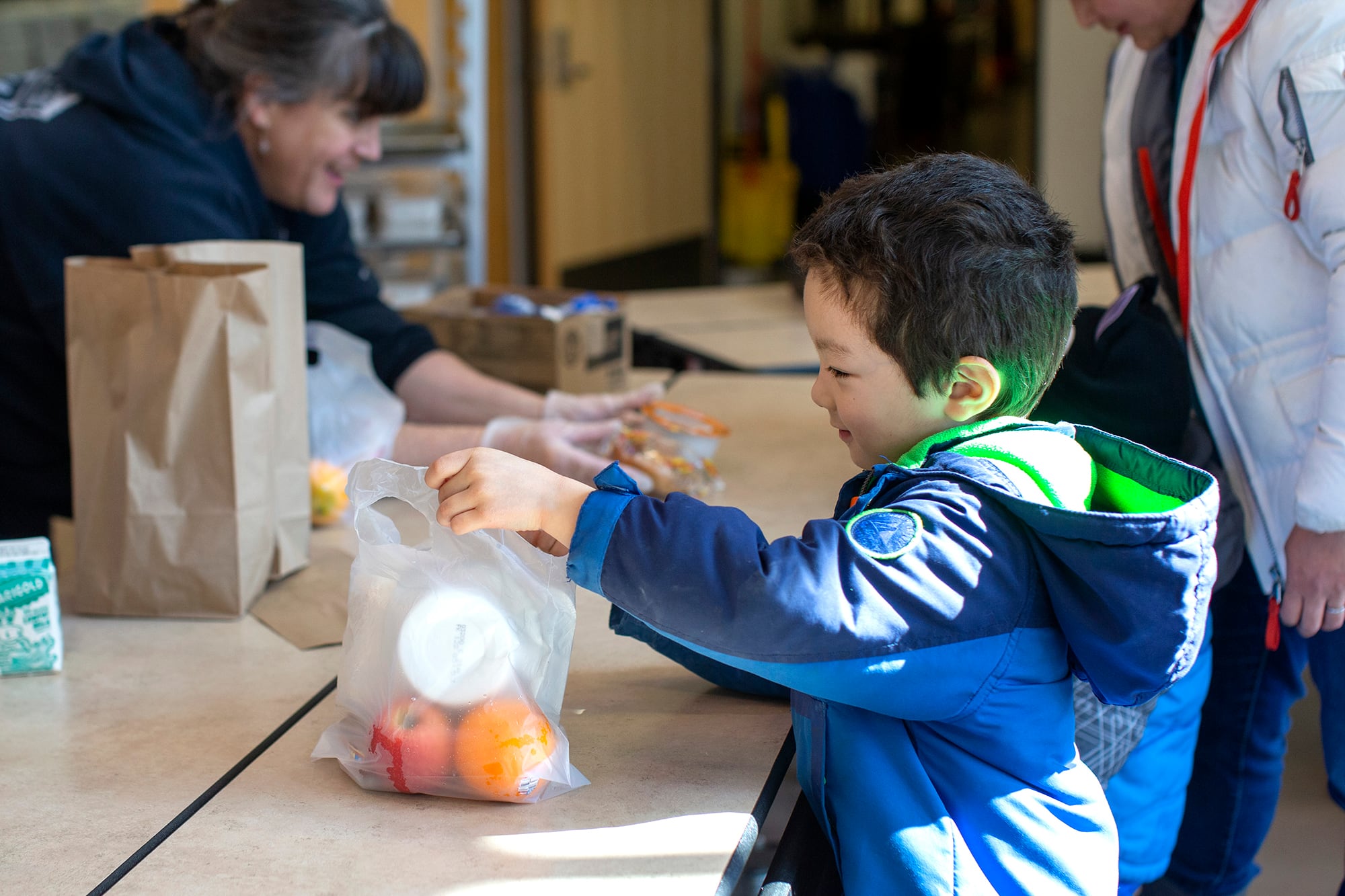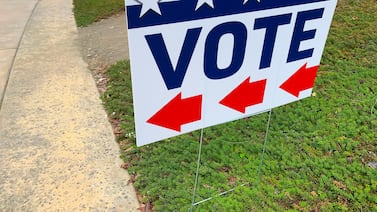Sign up for Chalkbeat’s free weekly newsletter to keep up with how education is changing across the U.S.
Republicans in Congress have approved President Donald Trump’s sweeping tax and domestic policy bill that will ramp up spending on immigration enforcement and make deep cuts to social safety net programs, with major ramifications for children and schools.
The bill, which the president is expected to sign by Friday, slashes spending on Medicaid, which provides health insurance to some 37 million children and is a critical revenue source for schools. It also limits eligibility for the Supplemental Nutrition Assistance Program, or SNAP, which provides food assistance to over 13 million children and makes kids automatically eligible for free meals at school.
The legislation significantly raises spending on immigration enforcement, which will likely translate to more immigration arrests and deportations. The president’s deportation campaign has already left schools working overtime to assure families it’s safe to send their children to school.
“When you take it all together it’s kind of like an assault on children and families policy-wise,” said Megan Curran, the director of policy at the Center on Poverty and Social Policy at Columbia University. “We’re going to see that the effects reverberate well beyond what we’re even understanding” right now, she said, “and schools are going to be on the front lines.”
The nearly 900-page bill also creates a new voucher-like program that will pay for private school scholarships — a major victory for school choice advocates who have successfully expanded similar programs in several states, but have previously failed to enact a nationwide version. States will be allowed to opt out, however, and it’s likely many Democrat-led states will.
Here is more on how what the president calls the “big, beautiful bill” is likely to affect children and schools:
Medicaid cuts will hurt school budgets
Trump’s policy bill makes historic cuts to Medicaid, which is the fourth-largest source of federal funding for schools. If millions of children lost their health insurance, it would undoubtedly reduce funding for schools, though it’s unclear by how much.
“Cutting Medicaid is equivalent to cutting school district budgets,” said Jessie Mandle, the national program director at the nonprofit Healthy Schools Campaign. “School districts are very much aware of how important Medicaid dollars are to serve students with disabilities, address the youth mental crisis, [and] address students’ behavioral health needs.”
In March, Mandle’s organization and other education groups surveyed 1,400 school staffers and officials from across the U.S. about how they rely on Medicaid. Around 9 in 10 respondents used Medicaid to pay the salaries of school health staff, such as school nurses, psychologists, and speech therapists. A little under half relied on Medicaid to buy assistive technology and other specialized equipment for students with disabilities.
Cuts to Medicaid would likely require schools to lay off staff and make cuts elsewhere in their budgets, the survey found.
And schools in rural communities, where a higher share of kids are enrolled in Medicaid and schools often play a big role in providing health care, are likely to feel the cuts more acutely.
SNAP cuts could limit free school meals
The federal legislation makes a series of changes to the SNAP program, including requiring more parents of school-aged children and teens aging out of foster care to work, scrapping eligibility for refugees and people who’ve been granted asylum, and raising how much states have to kick in.
The changes could result in hundreds of thousands of parents losing their SNAP benefits, which could have ripple effects on schools — though earlier provisions that would have more directly targeted the school meal program were stripped out of the bill.
When kids are enrolled in SNAP, they automatically qualify for free breakfast and lunch at school. And when a high share of kids are enrolled in SNAP, it’s more financially viable for schools to provide free meals to all students. That has a number of academic and social benefits for kids.
If families fall off the SNAP rolls, they may not realize they have to fill out paperwork at their child’s school to get free meals. And if fewer kids qualify for free school meals, schools will get a lower reimbursement from the federal government, which will make it harder to cover the cost of providing free meals to all kids.
“The cuts to SNAP that are currently proposed will increase hunger in homes and in classrooms,” said Erin Hysom, the senior child nutrition policy analyst for the nonprofit Food Research & Action Center. “It’s really going to be this kind of double whammy for families.”
Boost for immigration enforcement likely to affect schools
The president’s policy bill includes $31 billion in additional funding for U.S. Immigration and Customs Enforcement to hire more agents and cover the cost of deportations. The legislation also includes $13 billion in grants for states and local communities to assist with immigration enforcement.
An increase in immigration enforcement is likely to put additional burdens on school communities, many of which have already spent time and resources tending to students whose family members were arrested, advocating on behalf of students who were detained, and adding transportation and safety measures to assuage the fears of immigrant parents.
Recent research from Stanford University found that raids carried out by the Trump administration earlier this year in California’s Central Valley notably increased daily absences from school, especially for younger children. And earlier research has found that immigration raids have significant effects on children’s physical and mental health, as well as on broader school climate.
New voucher-like program will pay for private schooling
Tucked into the bill is the creation of a tax-credit scholarship program that will pay for private school tuition. Individuals can knock $1,700 off their tax bill if they donate that amount to an organization that awards scholarships to kids who attend private school.
The inclusion is a win for private school choice advocates who have long championed an idea like this.
But the program will be optional for states, after the Senate parliamentarian ruled states could not be required to participate. That will probably curb the program’s impact, because it’s unlikely that Democrat-led states — where officials have vociferously opposed using public money for private schools — will opt in.
It is unclear exactly how much the federal voucher-like program will cost, as there is no cap on the amount of tax credit payouts. (An earlier House version would have capped those costs at around $5 billion to $6 billion a year.)
Many states have their own tax-credit scholarship or voucher program.
Pell Grants now available for workforce training
Starting with the 2026-27 school year, students from low-income backgrounds who’d normally qualify for a federal Pell Grant to pay for college can get aid for short-term workforce training.
Known as a Workforce Pell Grant, the money could be spent on training programs that last eight to 15 weeks and lead to some kind of credential or academic credit toward a degree or certificate program. The idea has gotten bipartisan support in Congress, and has been endorsed by both Trump and Education Secretary Linda McMahon.
The training would need to prepare students for jobs or industries that are high-skill, high-wage, or in-demand — in line with the federal Perkins Career and Technical Education Act — and governors and state school boards would decide which programs qualify.
The Congressional Budget Office expects the program will be relatively small to start: Just $17 million in the first year and $20 million the following year.
Child tax credit bump excludes many low-income families
The bill increases the size of the credit from $2,000 to $2,200 a year, but does nothing to ensure more low-income families can benefit.
That means the child tax credit is actually “less generous” in today’s dollars than when the $2,000 credit began in 2018, because it was never adjusted for inflation, said Curran of Columbia University.
A July analysis by Curran and others found that 19 million children are in families who would get only some, or none, of the revised tax credit because they don’t earn enough money. That’s up from 17 million children who don’t fully benefit from the current child tax credit.
The final result is “head-scratching,” Curran said, after all of the bipartisan enthusiasm to expand and increase the child tax credit.
During the pandemic, the federal government temporarily raised the credit to $3,000 per child and $3,600 for younger children, and made it available to many more families with low or no income. There’s solid evidence that helped many families stay on top of household bills and pay for school supplies and other items for their children.
But the bill Trump is about to sign does not include those changes.
“It’s a huge pendulum swing,” Curran said. “The child tax credit doesn’t really do anything extra for families.”
Kalyn Belsha is a senior national education reporter based in Chicago. Contact her at kbelsha@chalkbeat.org.





